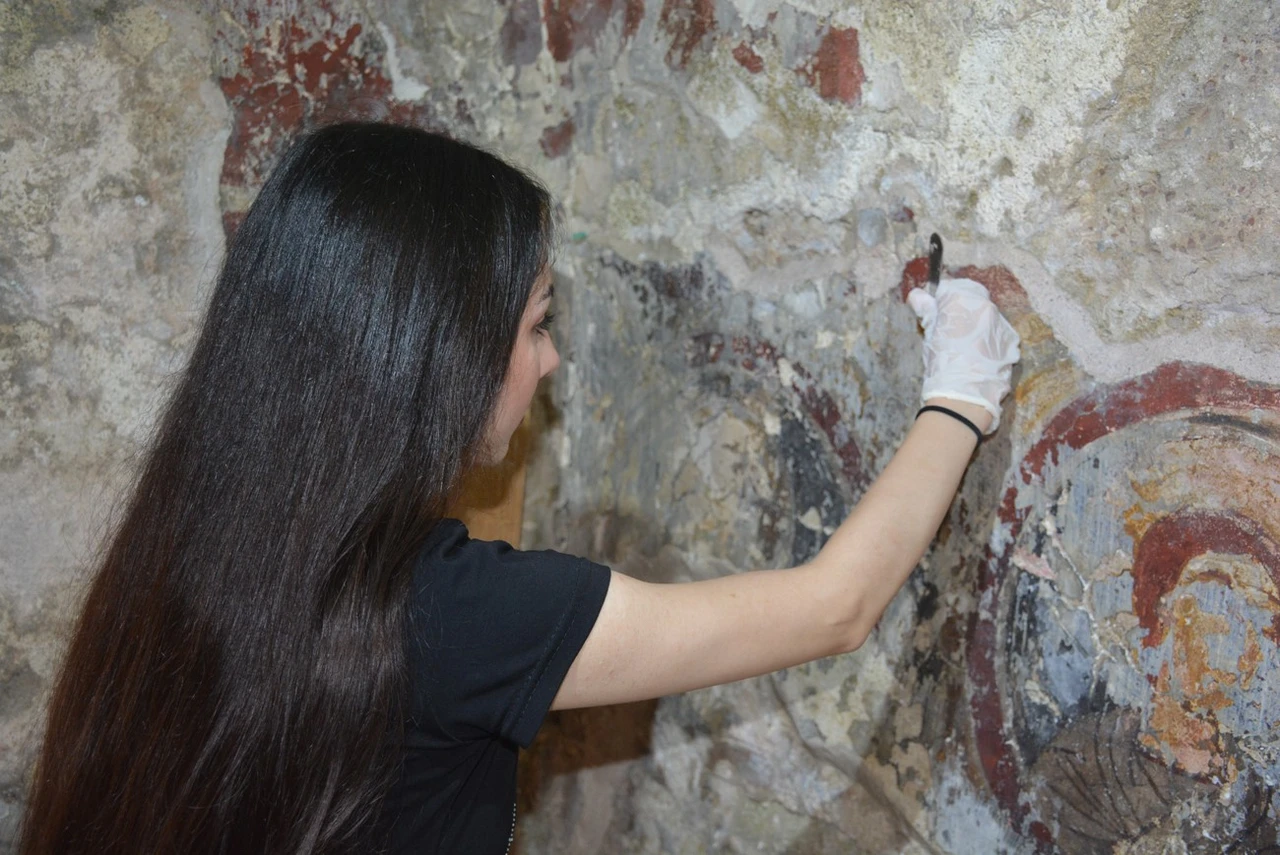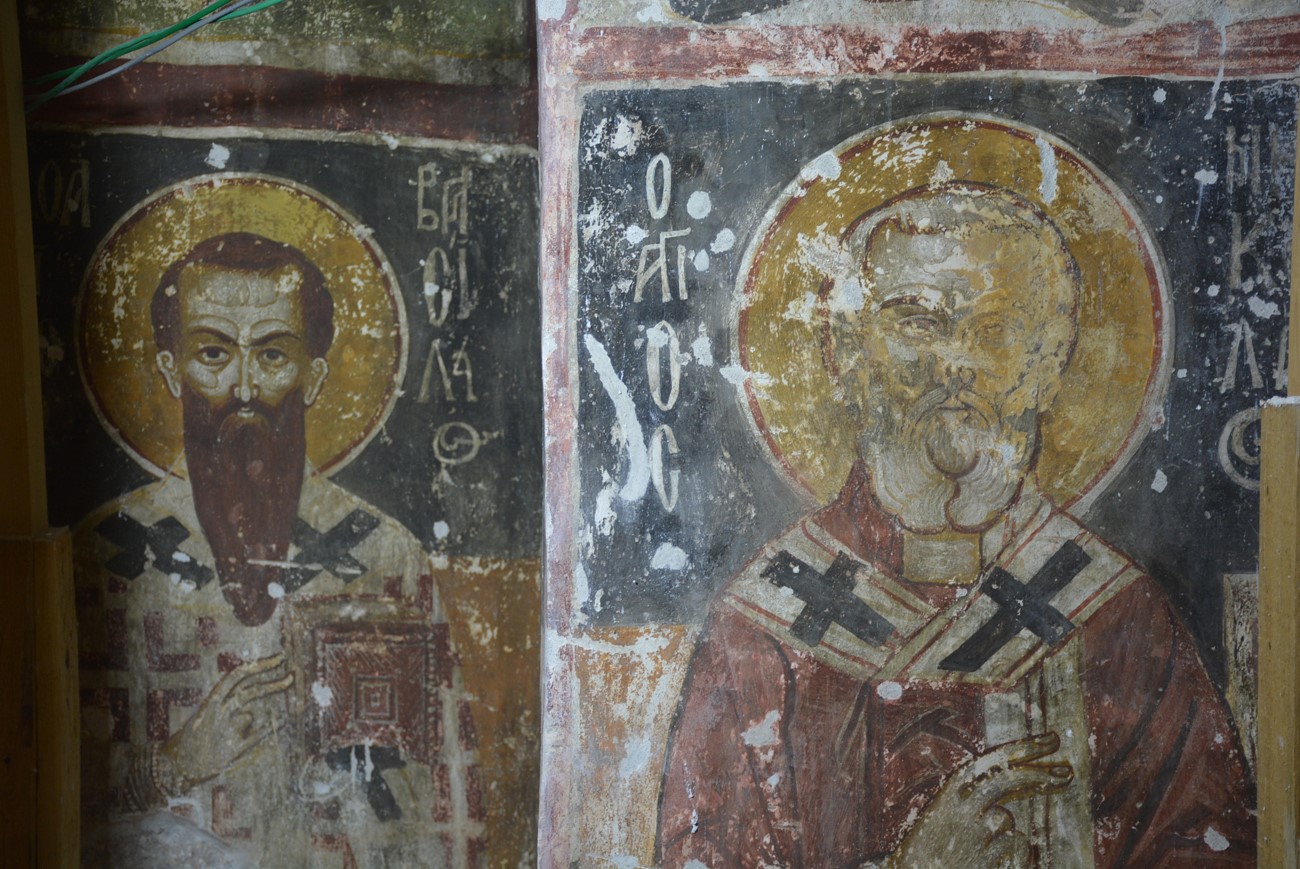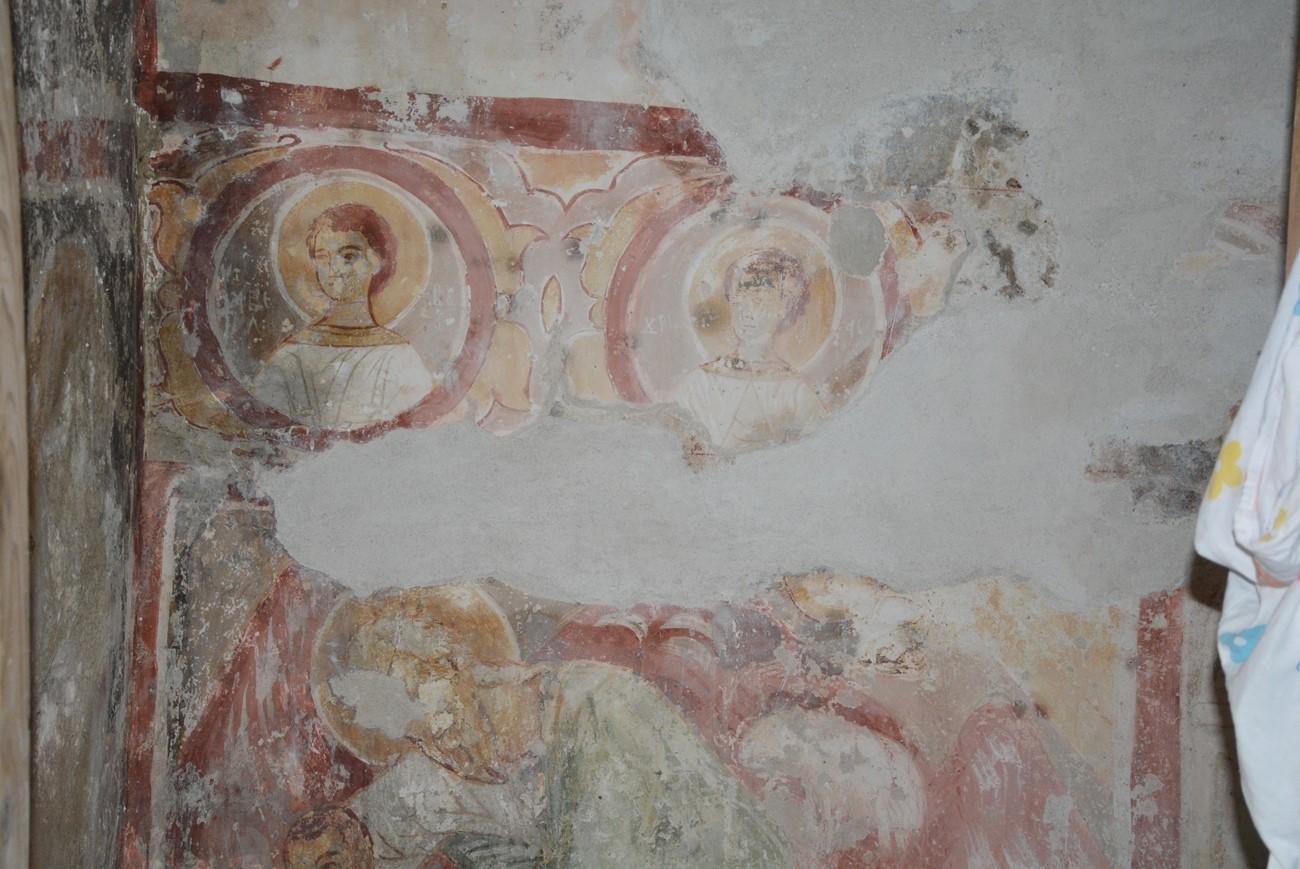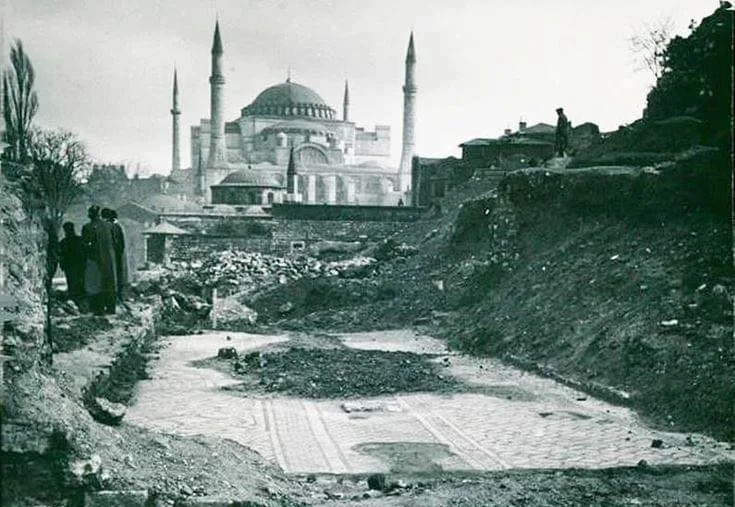Christian figures discovered in Türkiye’s Balatlar Church Complex
 Figures of clergymen, church bishops and Christian religious figures at the Balatlar Church Complex in Sinop, Türkiye, July 22, 2024. (IHA Photo)
Figures of clergymen, church bishops and Christian religious figures at the Balatlar Church Complex in Sinop, Türkiye, July 22, 2024. (IHA Photo)
Excavations at the Balatlar Church Complex in Sinop, Türkiye, have uncovered artifacts from a site that has been used by various civilizations for 2,300 years.
The finds include depictions of religious figures, church bishops and Christian symbols.

Professor Gulyuz Koroglu, Head of the Balatlar Church Complex Excavation, shared: “Our work began in June and will continue until the end of November. This year, we are concentrating on restoring wall paintings.”
Koroglu noted that the scaffolding previously installed inside the church has revealed part of the Roman period structure. Since the 12th century, the site has served various purposes, including as a church, an animal shelter, and a tobacco-drying facility, which caused considerable damage.
The restoration efforts, led by Sedef Ozturk, aim to uncover and preserve Christian iconographic paintings and enhance our understanding of the site’s cultural heritage.
The newly discovered artifacts underscore the historical and cultural significance of the structure, and ongoing restoration and research are expected to provide valuable insights into the region’s history and culture.

What does Balatlar Church Complex represent?
The Balatlar Church Complex in Sinop reflects the region’s historical depth. Excavations have unearthed significant findings from the Late Roman Imperial period. Historical sources confirm that the structure initially included a bathhouse, gymnasium and palestra.
Only three original halls remain today, and surface surveys suggest that the complex once covered a large area.
It is believed that one hall served as the bathhouse’s hot room (caldarium), another as the cold room (frigidarium), or potentially as a sports area (palaestra). Geophysical studies have also identified the bathhouse’s heating system (hypocaust) remnants.
During the Ottoman period, parts of the Roman structure were adapted into an Orthodox monastery in the 15th and 16th centuries.
This monastery, dedicated to the Dormition of the Virgin Mary and Archangel Michael, featured a north-eastern room as the monastery church.
The building’s vaults, walls, and niches in the western annexes were adorned with Late Byzantine-style paintings depicting Biblical and Torah themes.
Adjacent to the church is a sacred spring and burial area to the south. The area east of the church and the floor of the northern hall served as a cemetery for clergy and laypeople, continuing in use until the early 20th century.



